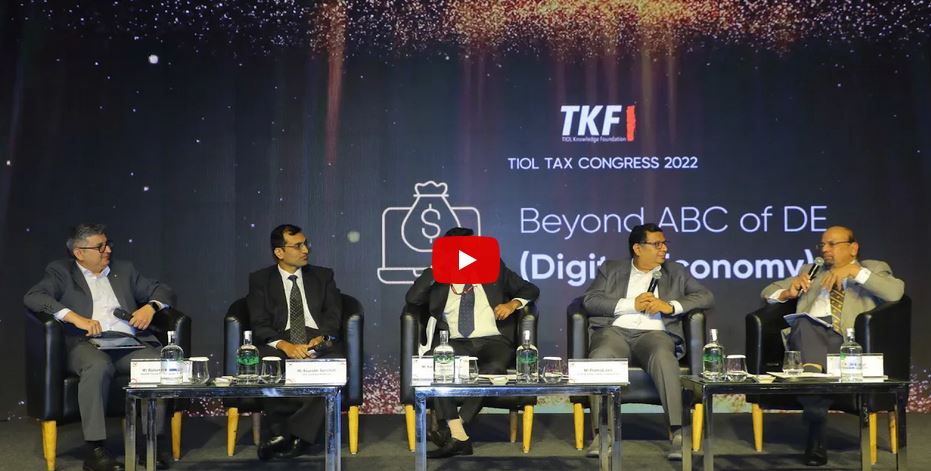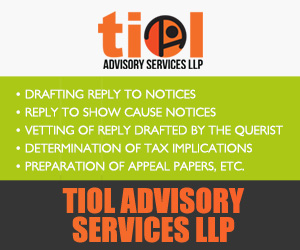2022-TIOL-103-SC-CX
CCE & ST Vs Merino Panel Product Ltd
CX - Valuation - CESTAT set aside the show cause notice issued by the Appellant-Revenue to the Assessee- Respondent, on the ground that it had invoked an incorrect method of valuing related party transactions - Inasmuch as sales to the related entities were discovered to be undervalued in comparison to those made by the Assessee to non-related independent entities - Show cause notice issued by the Revenue noted that the Central Excise Valuation Rules, 2000 [CEVR] did not contain any guidelines on the methodology to be adopted for discovering the assessable value of goods, when sales are made partially to both independent parties and related parties; therefore, show cause notice narrowed the scope of inquiry down to Rules 4 & 9-11 - Revenue in the show cause notice duly invoked Rule 11 read with Section 4(1)(a), and also placed reliance on an earlier decision of the CESTAT, Bangalore, in Aquamall Water Solutions v. CCE - On the strength of this, the show cause notice stated that the transaction value of the goods sold to the independent buyers would be transposed onto the sales made by the Assessee to its sister concerns in order to determine the appropriate excise duty chargeable - After undertaking the comparison between the two prices, the Revenue determined that the undervaluation of the sales to the related parties amounted to Rs. 24,14,05,257, and resulted in a shortfall in payment of Rs. 3,15,13,343 in excise duty - Extended period of limitation was also invoked in the SCN - One of the contentions raised by the assessee in adjudication proceedings was that the Revenue had incorrectly invoked Rule 11 of the CEVR, read with Section 4(1) of the CEA, to value the goods that were sold to the Respondent's alleged sister concerns; that the Department itself had issued a Circular 643/34/2002-CX on 01.07.2002 which [Sr.no.12] clarified the manner in which valuation was to be done when sales are made to both independent and related buyers and which clarified that Transaction value in respect of sales to unrelated buyers cannot be adopted for sales to related buyers since as per Section 4(1), transaction value is to be determined for each removal - That it was not open for the Department to go against its own administrative directions and the show cause notice was defective and void ab initio on account of being contrary to the Revenue's interpretation of the CEVR - However, the demand was confirmed along with imposition of penalty and interest and in appeal, the CESTAT, while allowing the same, observed that the SCN was contrary to the CBEC Circular and hence rendered the notice defective and unenforceable - Revenue is in appeal against this order of CESTAT.
Held:
+ Citation of an incorrect source of power does not vitiate the exercise of the power itself provided the power vests in the authority to begin with. [para 16]
+ CBEC Circular of 01.07.2002 is binding on the Revenue. If the show cause notice issued by the Revenue is found to be contrary to the Circular, it would prima facie result in abrogation of the uniformity and consistency which is strongly emphasized upon in Ranadey Micronutrients ( 2002-TIOL-184-SC-CX ). + Revenue's stance against its own circular can potentially lead to a chaotic situation where, with one hand, the Revenue would lay down instructions on how to interpret the relevant statutes and rules, and with the other hand, it would promptly disobey those very directions. Maintaining predictability in taxation law is of utmost importance and, for this reason, the Court should not accept an argument by the Revenue that waters down its own Circular as this would fall squarely within the contours of the prohibition outlined in Paper Products ( 2002-TIOL-84-SC-CX ). [para 19]
+ It is incumbent upon the adjudicatory bodies to ascertain the correct position of law unencumbered by the Revenue's interpretation as crystallized in its administrative directions. [para 20] + Revenue was at liberty to issue Circulars on the interpretation or application of different provisions, but Courts and Tribunals would give effect to the decisions of the Supreme Court as the law of the land. [para 22]
+ We do not agree that there exists any conflict between the Circular dated 01.07.2002, and provisions of the CEVR at all. In any case, even if we were to conclude that the provisions relied upon in the show cause notice was incorrect, such a defect is curable and cannot be enough for the notice itself to be set aside; invocation of the incorrect methodology for arriving at the assessable value is immaterial to the validity of the notice, provided that the power itself existed [para 24, 25]
+ Show cause notice and the order of the Commissioner proceed along the basis that Section 4(1)(b) is applicable as the Assessee and MIL and MSL are related parties. [para 34]
+ The unequivocal position which emerges is that the price charged from independent parties for the sale of excisable goods can be used as a benchmark for determination of excise duty on related transactions when such a price is readily available. However, we add the caveat that when making such calculations via transposition, the Revenue cannot act in a mechanical way.
+ The assessment of the appropriate value of the related party transaction must be made after considering relevant material and due application of mind. The entire quasi-judicial process of issuing a show cause notice and considering the distinguishing factors placed by the Assessee must be completed before the price of sales to independent buyers is utilized as a benchmark for sales to related parties. [para 35]
+ Sum and substance of our analysis is that the assessable value for the related party sales can be established by referring to the normal price under Section 4(1)(a) of the CEA, which is readily available in the present case. This is, in our opinion, the true meaning and intention underlying the Circular of 01.07.2002. [para 36]
+ Commissioner's order proceeds to determine the value of the sales made by the Respondent-Assessee to its sister concerns on the basis of the value of its sales to independent parties. In our considered view, this is entirely consistent with the actual intent of the Circular dated 01.07.2002, which we have already held is not in contravention with either the CEA or the CEVR. [para 37] + When the normal price that is ordinarily charged in dealings, where the price itself is the sole consideration of the transaction, is available, that price can be transposed onto the related party purchases as well, to arrive at the assessable value.
+ Order of the Commissioner regarding the value of the goods sold to the Respondent's sister concerns is in consonance with this Court's earlier judgments and the Circular dated 01.07.2002. [para 40] Limitation:
+ Since the Revenue itself appeared to be unclear on the correct method of valuation of the goods, it is not appropriate to saddle the Respondent with additional liability, namely, other than the excise duty. We do not approve the levy of interest and penalties upon the Respondent. [para 38]
- Appeal allowed: SUPREME COURT OF INDIA |



